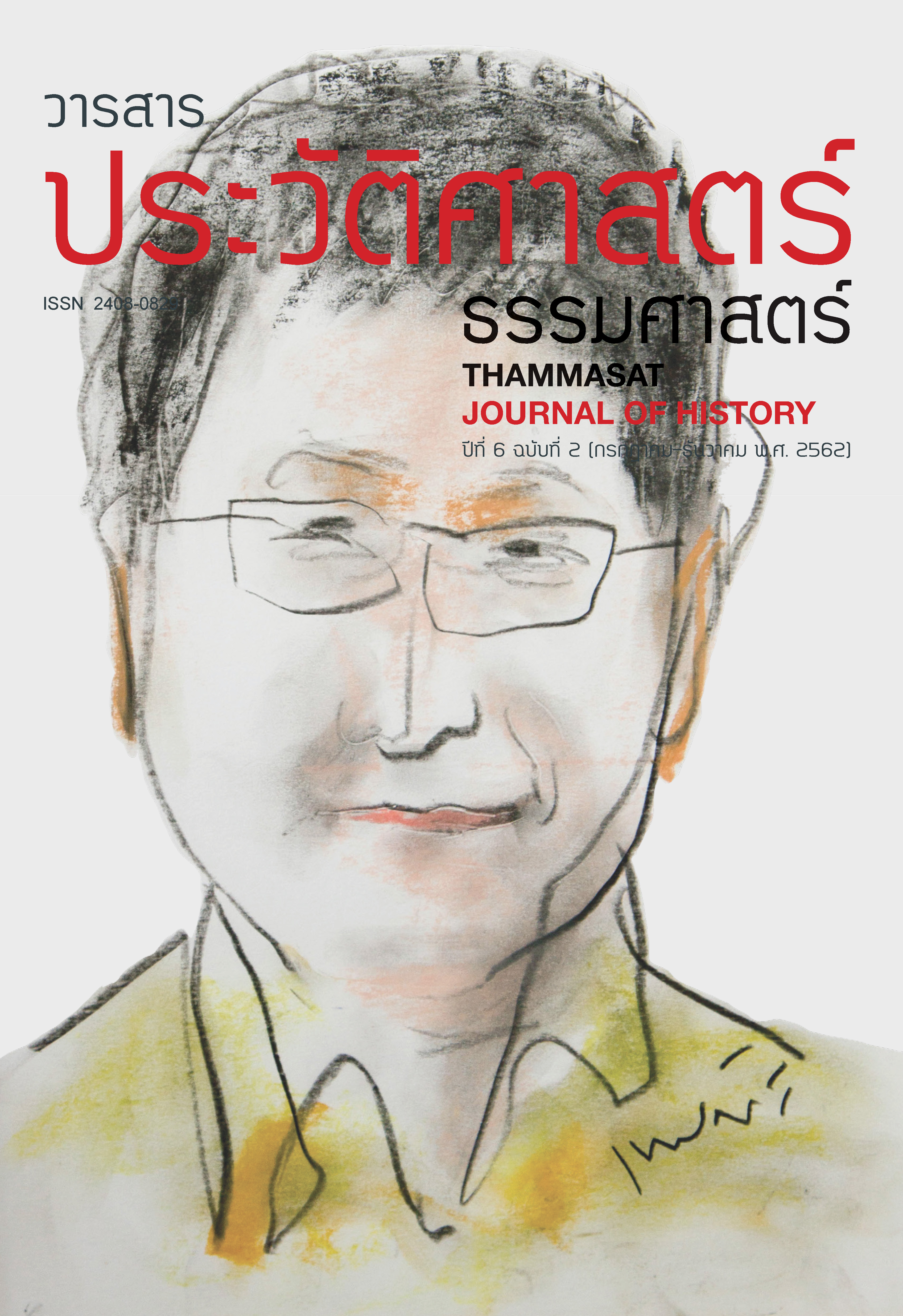Reviving Tradition The Returning Activities of overseas Chinese in South China in the 1980s-90s
Main Article Content
บทคัดย่อ
The interaction between immigrants and their hometowns embodies the circulation of capital and goods, the emotional communication, and the connections in religious culture as well. In South China, the characteristics of the emigrant community gradually emerged and were consolidated with the rise and fall of different port after the mid-19th century. Since then, a large number of overseas immigrants, especially those who migrated to Southeast Asia, maintained close contact with their hometowns in South China. In 1949, after the victory of the Chinese Communist Party, the society of the emigrant community in South China, such as in Chaozhou area, experienced a different social transformation from the past, specifically the transformation of traditional culture. The linkage mechanism between immigrants and their hometowns also changed accordingly. After the reform and opening up in the 1980s, communist China adopted a proactive diplomatic policytoward overseas Chinese. In the local emigrant community, the activity of visiting the ancestral villages became more and more frequently with the donation to construct the infrastructure of those emigrant communities. It cannot be ignored that overseas Chinese had also reconstructed the cultural tradition that had been interrupted for more than 30 years. Taking Hougou village as an example, this article will explore the factors affecting the process of reviving tradition by overseas Chinese.
Article Details
ลิขสิทธิ์บทความเป็นของผู้เขียนและสงวนสิทธิ์ตามกฎหมาย
ข้อคิดเห็นใดๆ ที่ปรากฏในวารสารนี้เป็นของผู้เขียน คณะกรรมการวารสาร ภาควิชาประวัติศาสตร์ฯ กองบรรณาธิการ ตลอดจนกรรมการกลั่นกรองประจำฉบับ ไม่จำเป็นต้องเห็นพ้องกับข้อคิดเห็นเหล่านั้น
เอกสารอ้างอิง
“[Thai Primary School Education and Civil Education School].” Nanyang Business Daily, September 6, 1962.
“[Thailand started the Chinese language boom].” Nanyang Business Daily, February 5, 1973.
“[Siam Education I Have Seen].” Nanyang Business Daily, December 24, 1950.
“[Thailand begins to learn Chinese].” Nanyang Business Daily, February 5, 1973.
“[Thailand Chinese Education].” Nanyang Business Daily, June 26, 1967.
“[The Changes of Chinese Education in Thailand].” Nanyang Business Daily, June 26, 1967.
Choi Chi-cheung. ‘Shantou Kaibu yu Haiwai Chaoren Shenfen Rentong de Jiangou: Yi Yuenan Xigong Di’an Shi de Yi’an Huiguan wei Li’ [The Opening of the Shantou Treaty Port and Construction of Identity: A Case Study of the Ngee Ann Guild in Saigong, Vietnam]. in Lee Chee Hiang [Li Zhixian], eds. Haiwai Chaoren de Yimin Jingyan [Migration Experience of the Overseas Chaozhouese]. Singapore: Global Publishing, 2003.
Dean, Kenneth. Taoist ritual and popular cults of Southeast China. New Jersey: Princeton University Press, 2014.
Hong Kong Ta Kung Pao, November 30, 1953.
Hougou village Committee. Glorious Footprint: A Brief History of Revolution at Hougou Village, Edited by Xu Xiuying. Chenghai: Hougou Village, 2010.
Li Ping. “.” Southeast Asia, August 2012.
Liu Shuang. Identity, Hybridity and Cultural home: Chinese Migrants And Diaspora In Multicultural Societies. London and New York: Rowman & Littlefield International, 2015.
Munro, Gayle. Transnationalism, Diaspora and Migrants from the former Yugoslavia in Britain. Abingdon: Routledge, 2016.
Nanyang Business Daily. August 8, 1939.
Purcell, Victor, and Alice Li. The Chinese in Southeast Asia. London: Oxford University Press, 1965.
Shen Ye. The Brightest Moon in Other Homeland: Shen Ye Memoir. Taipei: Du Jia Press, 2003.
Siu, Helen F. "Recycling tradition: culture, history, and political economy in the chrysanthemum festivals of South China." Comparative Studies in Society and History 32, no. 4 (1990): 765-794.
Siu, Helen F. Agents and Victims in South China: Accomplices in Rural Revolution. Connecticut: Yale University Press, 1989.
The Compilation Committee of the Education Dictionary. Education Dictionary: Overseas Chinese Education, Hong Kong and Macao Education 4. Shanghai: Shanghai Education Press, 1992.
The Institute of Asian Studies (IAS). Taiguo Chaozhouren jiqi Guxiang Chaoshan Diqu—Diyiqi Zhanglingang (1767-1850) [Teochiu Chinese in Thailand and in the Native Land at Chaoshan] ชาวจีนแต้จิ๋วในประเทศไทยและในภูมิลำเนาเดิมที่เฉาซัน สมัยที่หนึ่ง ท่าเรือจางหลิน 2310-2393, Asian Institute of Chulalongkorn University, 1991.
Wang Hui, and Xu Xiu-ying. Shantou Ancient Villages: Hougou Village. Guangzhou: Guangdong people's Publishing House, 2018.
Wang Hui. Sojourning and emigration: emigrant communities in Chaoshan area (1949-1958), Social Transformation in Chinese Societies 14, no. 2 (2018): 97-106.
Watson, J.L. Emigration and the Chinese Lineage: The Mans in Hong Kong and London. California: University of California Press, 1975.
Woon Yuen-fong. Social change and continuity in South China: overseas Chinese and the guan lineage of kaiping county, 1949-87, The China Quarterly 118 (1989): 327-344.
Yen Ching-hwang. “Chaozhou people and fujian people in the early singapore: a comparative study of power structure and power relationship among overseas chinese.” The International Journal of Diasporic Chinese Studies 6, no.1 (2010): 21-50.
Zhang Yingqiu. ‘Zhanglin gangkou yu hongtou chuan’ [Zhanglin Port and the Red-head Junks], Shantou Wenshi [Documents and History of Shantou], 8 (1990): 205–215.


